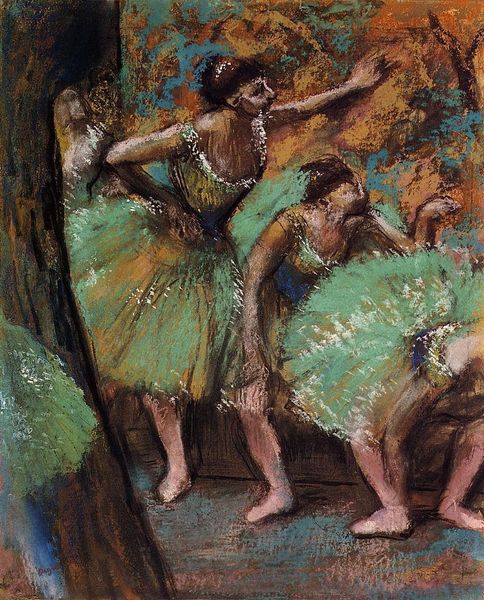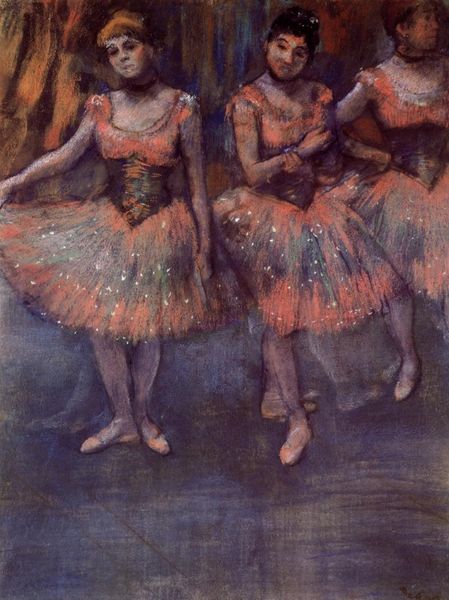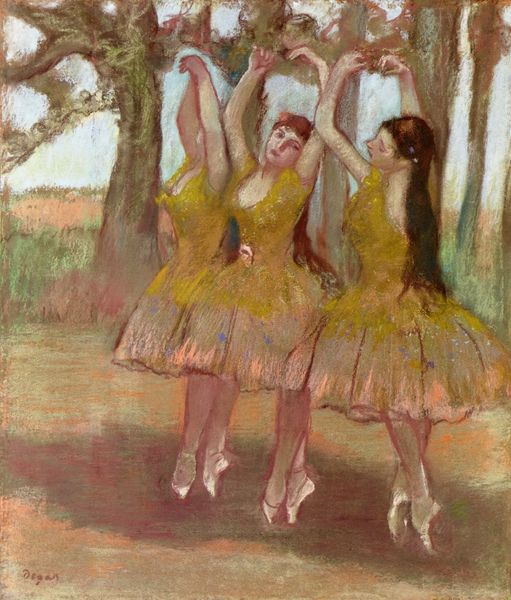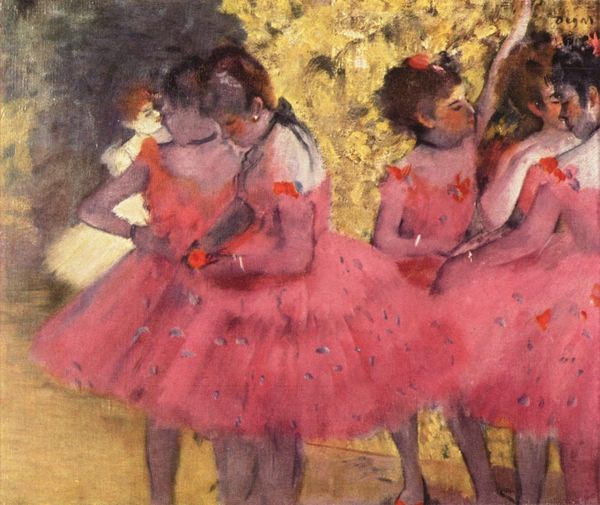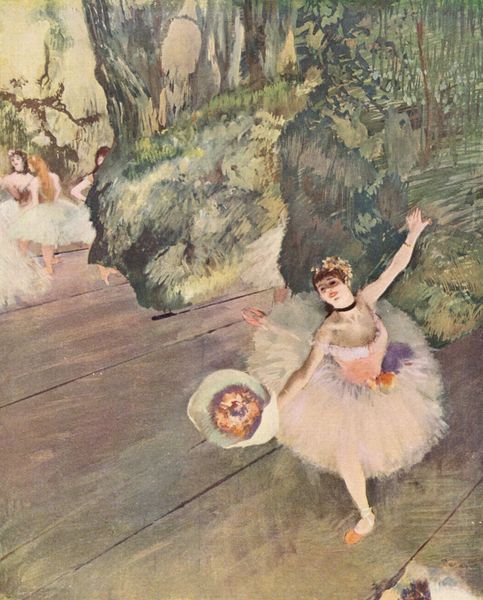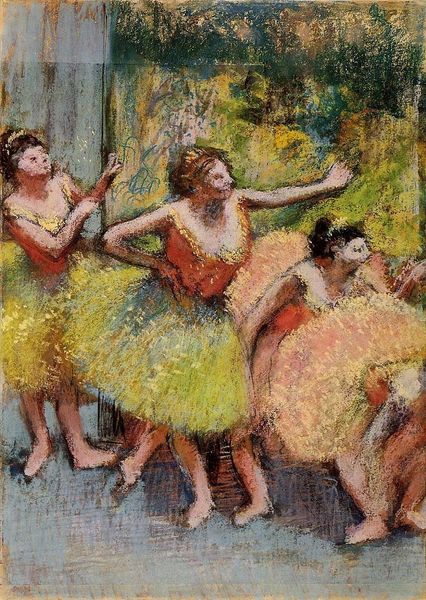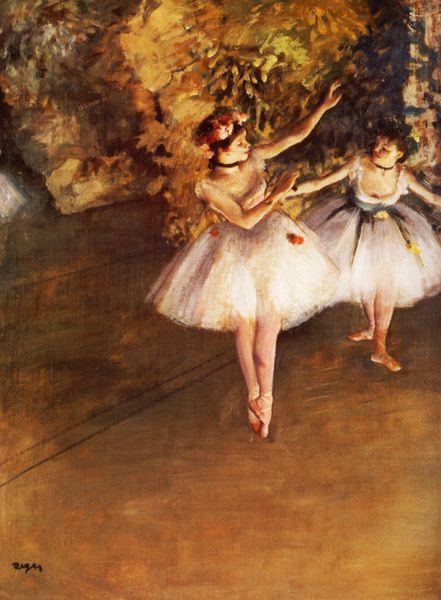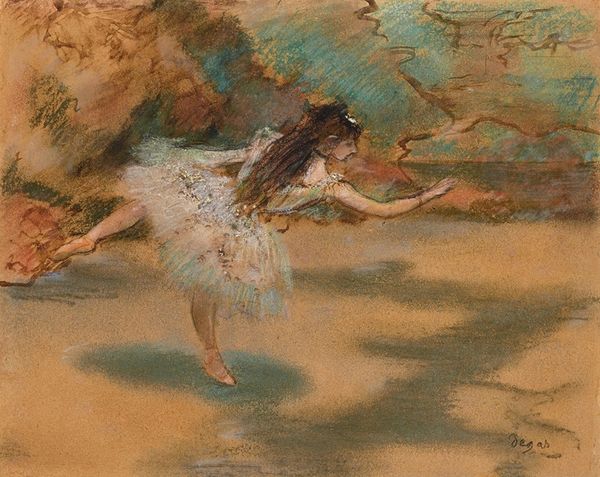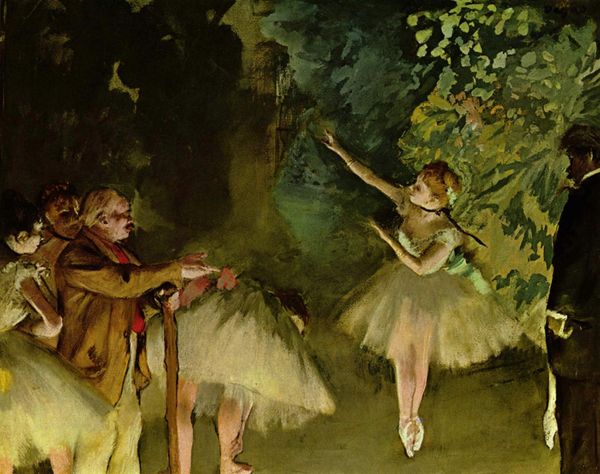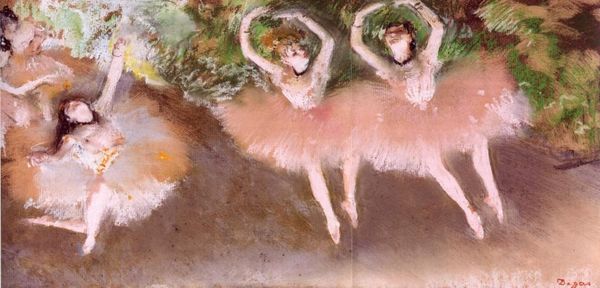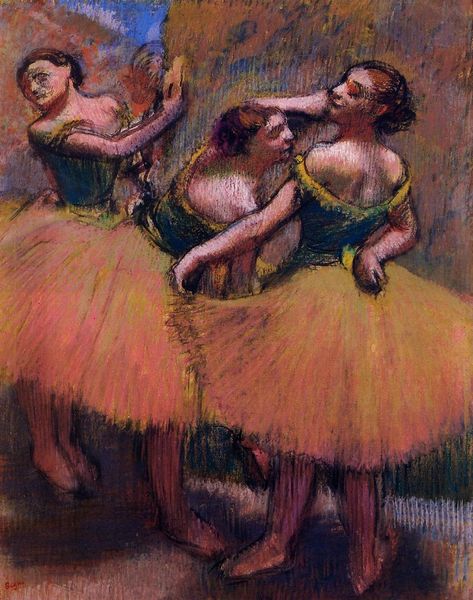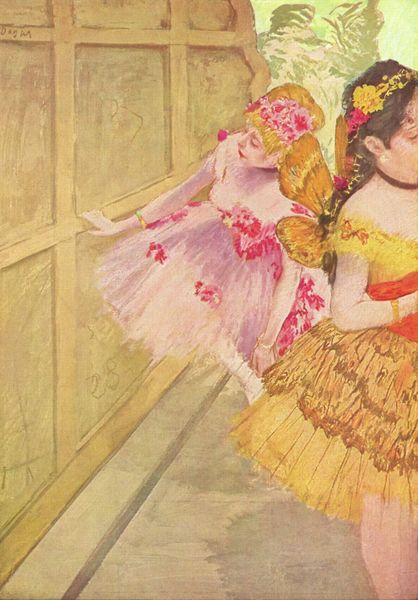
drawing, pastel
#
portrait
#
drawing
#
impressionism
#
impressionist painting style
#
figuration
#
genre-painting
#
pastel
#
watercolor
Copyright: Public domain
Curator: Edgar Degas, best known for his depictions of dancers, created "Dancers Bending Down" around 1885. The medium here appears to be pastel on paper. What’s your immediate impression? Editor: There’s an ephemeral quality to it. The hazy pastel work lends itself to a dreamlike state. The dancers almost seem to shimmer, caught between reality and illusion. It feels both intimate and performative. Curator: That tension is palpable. Degas, a notorious observer of Parisian life, often chose scenes from the ballet. What's compelling is that he frequently depicts dancers offstage or in practice, disrupting the polished image typically presented to the public. In what ways does this subvert expectations? Editor: By capturing these candid, unguarded moments, Degas brings to light the often-grueling reality behind the art form's perceived grace. The dancers, in their vulnerable poses, almost convey a sense of labor and discipline, rather than pure beauty. The bending pose isn't idealized or overtly sensual; it seems almost ritualistic. The pastel work softens the edges, which, through a contemporary lens, feels inherently feminist, challenging patriarchal power structures in art. Curator: It's important to recognize that even in "revealing" backstage, Degas was making careful aesthetic choices about which bodies, postures and movements he foregrounded, and how. One also cannot ignore that this image appeared within a particular institutional setting, framed by exhibition parameters that implicitly supported certain values. How would you say the artwork and presentation reinforce, even subtly, existing societal dynamics? Editor: Degas certainly maintained an outsider's perspective. The gaze could be seen as voyeuristic, reducing the women to objects on display, furthering capitalist structures. While showing their training could humanize them, we need to consider Degas' place in power dynamics, a male artist portraying working class women. However, do you think the dreamlike aspect subverts these narratives? Curator: It certainly introduces complexity to this particular artwork and it should remain at the forefront in conversations surrounding the piece, in the past, present, and future. Editor: Precisely, and reflecting on how the setting and society shape the way it is perceived today gives us insights to it that would have otherwise gone unseen.
Comments
No comments
Be the first to comment and join the conversation on the ultimate creative platform.
